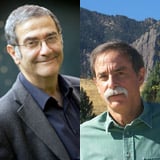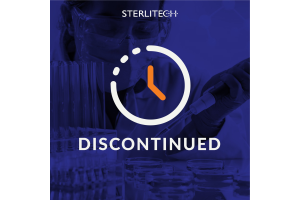Serge Haroche and David J. Wineland Win the Nobel Prize in Physics

In 1935, Austrian physicist Erwin Schrödinger came up with one of the most famous thought experiments in history, Schrödinger's cat. The premise of the experiment has a cat in a box, with a capsule of poison gas connected to a Geiger counter. If a radioactive atom decays and triggers the counter the capsule opens and the cat will die. Quantum mechanics, which govern radioactive decay, state that the atom is in a superposition state of both not yet decayed and having decayed. The cat, by extension, is both dead and alive in the box, a seemingly paradoxical outcome. Quantum superposition is so sensitive to interaction with the environment that any attempt at observation ends the superposition and the cat becomes either dead or alive. Today, we are happy to offer our congratulations to Serge Haroche and David J. Wineland, who were awarded the Nobel Prize in Physics for independently devising ways to directly observe individual quantum particles in a superposition state without destroying them. Their methods have paved the way for other scientists to scientists to peak into the box and see the cat dead and alive. Thanks to their work, the bizarre world of quantum mechanics is no longer constrained within thought experiments. While the methods used by Haroche and Wineland were developed independently, they do share many similarities. Serge Haroche trapped a single photon between a pair of superconducting mirror and fired specially prepared atoms, called Rydberg atoms, at it to measure the change that occurred to the atom due to the photon. David Wineland, on the other hand, trapped a single ion in group of electric fields and fired a laser at the ion to suppress the ion’s movement in the trap, allowing him to observe the ion’s superposition state. The work of Haroche and Wineland has the potential to revolutionize the way we handle information by opening the door to practical quantum computing. The manipulation of quantum particles is already being used to create optical clocks that are over 100 times more accurate than the atomic clocks that are currently used as national time standards. The original press release announcing the award as well additional information about the Nobel Laureates can be found here. Be sure to visit us again tomorrow as we cover the winner(s) of the Nobel Prize in Chemistry.
- Most Viewed Blog Articles (5)
- Company News (284)
- Emerging Technologies (64)
- Microbiology and Life Science News (93)
- Water and Fluid Separation News (97)
- Filtration Resources (93)
- Product News (19)

![Join Sterlitech at BIO 2024 [Booth #5558]: Exploring the Future of Biotechnology](https://www.sterlitech.com/media/blog/cache/300x200/magefan_blog/b4.jpeg)




